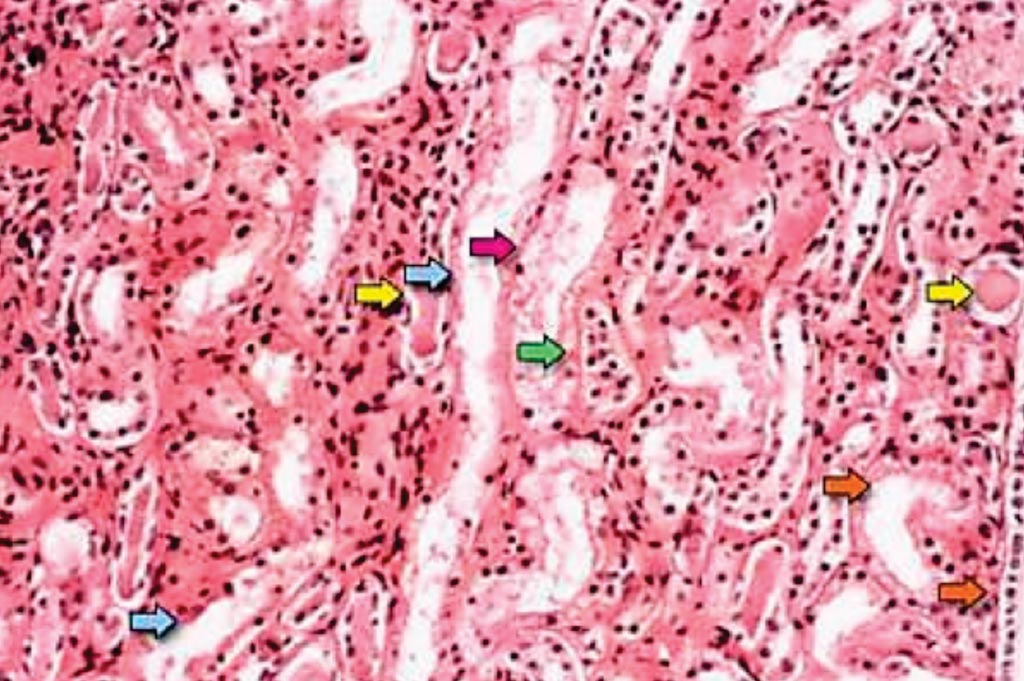Autoimmune Disease Discovered Causes Kidney Failure
By LabMedica International staff writers
Posted on 15 Nov 2017
An insidious new autoimmune disease that causes kidney failure has been discovered. The condition causes a build-up of waste products in the blood and makes it difficult for kidneys to maintain adequate balance of fluid in the body.Posted on 15 Nov 2017
Scientists have discovered for the first time that in the nephrons, the functional units of the kidneys, had coated a specialized part of cells called brush borders, which help reabsorb and process proteins.

Image: A photomicrograph of a renal biopsy specimen suggesting acute tubular necrosis is the patchy or diffuse denudation of the renal tubular cells with loss of brush border (blue arrow) (Photo courtesy of the University of Alberta).
A team of scientists collaborating with those at the University of Louisville (Louisville, KY, USA) identified anti-brush border antibody (ABBA) after analyzing biopsied kidney tissue from 10 patients. Those who were identified had a combination of proximal tubule damage, immunoglobulin G (IgG)-positive immune deposits in the tubular basement membrane, and circulating antibodies reactive with normal human kidney proximal tubular brush border. Immunoblotting of a protein extract from human tubular cells was performed with serum from cases and controls, and immunoprecipitation followed by mass spectrometry was used to identify the protein targeted by the anti-brush border antibodies. Cell expression of recombinant protein followed by immunoblotting and immunoprecipitation was used to confirm the identity of the antigen.
The patients with ABBA disease were elderly (mean age 72.9 years), presented with acute kidney injury (median serum creatinine 4.0 mg/dL) and moderate proteinuria. The kidney biopsy showed acute tubular injury with apical cytoplasmic blebbing, loss of brush border, regenerative changes and granular IgG and C3 deposits along tubular basement membranes. All patient sera were reactive to the proximal tubular brush border on sections of normal human kidney. Serum from all patients but not controls recognized a high molecular weight protein in renal tubular protein extracts that was identified as low-density lipoprotein receptor-related 2 (LRP2) by immunoprecipitation and mass spectrometry. Recombinant expression of an N-terminal recombinant fragment of LRP2 was used to confirm this finding by Western blot and immunoprecipitation. LRP2 specifically co-localized with IgG in the tubular immune deposits.
Jon B. Klein, MD, PhD, a professor of medicine and director of the Core Proteomics Laboratory, said, “It's the first time in my career that I've described a new disease, and truthfully, most people in their career don't stumble on this. We don't know yet whether this causes kidney failure in a lot of people. It's early in the story. The disease is rather insidious. It was documented in a group of older men who simply turned up with abnormal kidney function, and there were no symptoms until they had very advanced kidney failure.” The study was presented on November 3, 2017, at the American Society of Nephrology's Annual Meeting held in New Orleans, LA, USA.
Related Links:
University of Louisville














